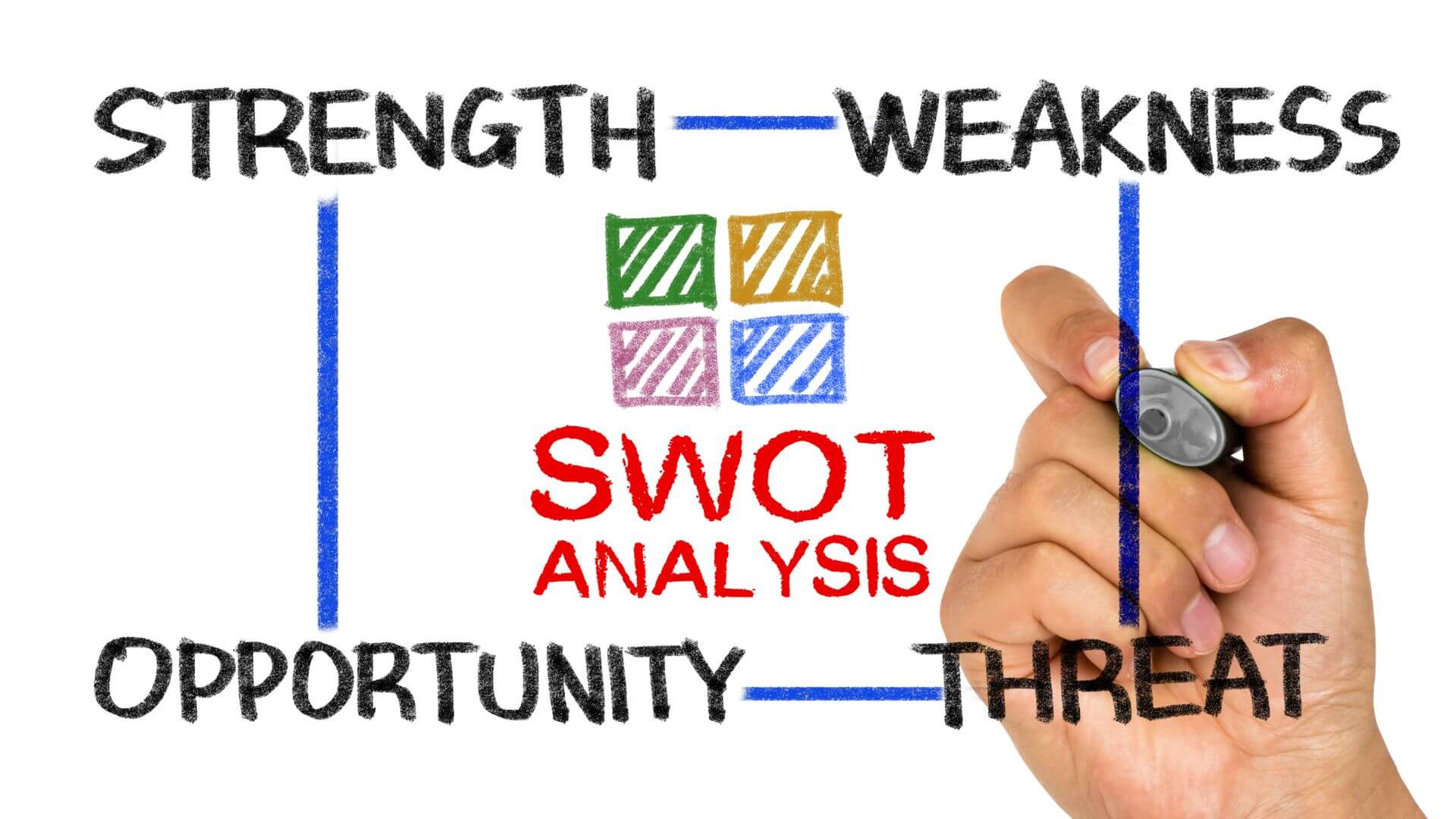How To Do A Competitor SWOT Analysis

A SWOT analysis can be a very useful tool to help you understand the strengths and weaknesses of your business and the opportunities and threats in your industry. But what if you want to use a SWOT analysis to understand your competition?
That's where a competitor SWOT analysis comes in. A competitor SWOT analysis looks at the internal and external factors that can impact your business like a regular SWOT analysis. But instead of looking at these factors about your business, a competitor SWOT analysis looks at them about your competition.
In this article, we'll look at a competitor SWOT analysis, why you might want to do one, and how to go about doing one. We'll also provide a template and examples to help you get started.
What Is A Competitor SWOT Analysis?
A Competitor SWOT Analysis is a strategic marketing analysis that helps you understand your competitors' strengths, weaknesses, opportunities, and threats. In addition, it will help you figure out what marketing strategies work best to beat your competitors in the market. A Competitor SWOT Analysis incorporates your competitors' internal and external factors.
The internal factors include the business's strengths and weaknesses, such as its management team, the company's culture, and its financial health. The external factors include the competitors' market conditions and the industry's forces.
A Competitor SWOT Analysis is helpful for any business looking to grow in a competitive marketplace. It allows you to analyze your competition and determine how best to position your product or service to win over customers.
Why Use A Competitor SWOT Analysis?
A competitor SWOT analysis can help you in several ways, including:
Understanding your competition: A competitor SWOT analysis can help you better understand who your competition is and what they're doing. This understanding can give you insights into their strategies and how they might react to changes in your own business.
Developing strategies: A competitor SWOT analysis can help you develop strategies to improve your own business. For example, if you know one of your competitors is weak in social media marketing, you could create a strategy to take advantage of that weakness.
Assessing opportunities and threats: A competitor SWOT analysis can help you assess your business's opportunities and threats. For example, if you know that a new competitor is entering your market, you can use a SWOT analysis to assess their threat to your business.
How To Start A Competitor SWOT Analysis
We have provided a step-by-step guide for how to conduct a competitor SWOT analysis. First, identify your competitors, then run a SWOT analysis of your rivals.
Identify Your Competitors

The first step in conducting a competitor SWOT analysis is identifying your competitors. You can do this by listing all the companies in your industry or by conducting online research to identify your major competitors. It's important to note that you don't need to list every company in your industry. Instead, you should focus on the top three to five competitors that have the most significant impact on your business strategy.
Indirect competitors: Your competitors will be key players within your industry or sphere whose products or services are sufficiently different from yours that you don't actively compete with them.
Aspirational competitors: You can identify your aspirational competitors by looking at the companies that are leading in your field. Then, you draw inspiration from them, even though you do not compete with them.
Perceived competitors: Your sales delivery process will have identified these companies, but they won't be direct competitors.
Track Your Competitors' Digital Footprints
The next step in conducting a competitor SWOT analysis is to track your competitors' digital footprints. It means that you should track the online presence of your competitors. To conduct a successful competitive analysis, it is vital to get a complete picture of your competitors' online footprints. In addition, 77% of the surveyed companies said that understanding all aspects of a company's marketing, customers, products, and so on, is critical to beating competitors.
A cursory glance at a website isn't enough in today's world. It's time to wade deep: You can follow them on social media, make sure you are notified when their name is mentioned on Google alerts and be attentive to their feedback and reviews. Suppose you wonder how this data lets you discern your competitors' strengths and weaknesses.
Assessing the Strengths and Weaknesses of Competitors.
A company's website can reveal a lot about its marketing strategy, its unique selling proposition, and what they want its market to perceive them as. Identifying the keywords and demographics targeted by their content marketing can help you.
Getting news coverage will give you an idea of which media outlets to target. Observing other companies' stories will also provide insight into what makes them successful. For example, you can tell the company is growing if they are hiring. You can see in which direction the specs point. What are your aspirations in that area? Are you expanding?
It's tricky to review websites. You'll get a sense of what your competitors do well and what they do badly, but they often tend to be skewed toward the negatives. Your research will help you identify any gaps that need to be filled, which you can take advantage of if you act quickly!
Analyze & Create a Competitor Analysis
Intelligence collected from multiple sources provides a comprehensive overall picture of your competitors' activities. But, unfortunately, it's not good enough to gather all this information, then let it gather digital dust on your desktop.
Use it! Analyze it! Ask yourself: Do we do anything well at my company? What makes my products so popular with my customers? What is my USP and what are the essential resources I have? How can I maximize what I have?
Think about the flipside, too: How can we improve? Which negatives are consistently emphasized by my customers? Is there a better way to brand me? What do I lack that I need?
It would help if you did the same with your competitors once you acquired this information about your business. Assess your strengths and weaknesses, and determine where you do better than others.
Turn Information Into Results!
Take action based on data. You will improve your business approach by developing a SWOT analysis-based strategy. Identifying areas in which each department needs to make changes is essential. For example, the marketing team may want information on your competitors' content strategies to develop their initiatives, create a more cohesive brand, and write more coherent copy.
You'll need to share specs and reviews with your product team so they can enhance your product -- and make selling it easier for their colleagues!
Conclusion
A competitor SWOT analysis allows you to analyze your competition and understand what you can do to beat them. When you understand your competitors better, it also helps you know your industry better. A competitor SWOT analysis allows you to identify your competitors' strengths and weaknesses. It also allows you to determine your competitors' opportunities and threats. Finally, it will help you figure out what marketing strategies work best to beat your competitors in the market.
Take action: Join 7,000+ individuals and teams relying on Speak Ai to capture and analyze unstructured language data for valuable insights. Start your trial or book a demo to streamline your workflows, unlock new revenue streams and keep doing what you love.